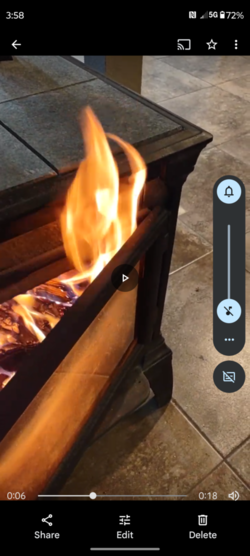We have a question that when we asked the dealer, we were dismissed, as though our question were foolish.
We recently acquired a Mansfield, and tried to do break-in fires, but when the front door is closed the fire goes out. The dealer says it is because there isn’t enough draft because it isn’t cold enough outside. OK, but when we put a small fan at the gap in the back, where it appears the intake for the primary air flow is located, there is no indication that any air is, in fact, reaching the firebox. The basic physics, as we understand things, would imply that the question of draft is immaterial when air is being physically forced into the system, with no need for a temperature differential to pull the air through the system.
Our concern is that this implies that there is a problem getting air from the intake port to the firebox. Whenever the dealer, either at the sales or service side, is asked why no air is getting into the firebox when the front door is closed, we are treated as though we are asking a foolish question. We were shown the parts diagrams (https://1q4gfb42pami41tumh2vps5s-wp...mansfield-iii-8013-illustrated-parts-list.pdf), but got no answers to the question, “How does air get into the firebox when the front door is closed and the Primary Air Control slide is open?” Nor does it provide any way to assess whether the air channel is blocked in any way.
This is vexing on a number of levels, and we are baffled that the manufacturer site doesn’t provide any guidance. We found the mention of an OUTSIDE AIR SUPPLY (Optional Kit #90-53220), and see the installation instructions, and interpret the existence of such an accessory to mean that there is a way to bring additional air to the system. All we were trying to do is introduce additional air by using a fan, which, as mentioned, had no effect, leading to the suspicion that there is a blockage in the system—which the service desk at the dealer assured us was impossible.
Please help. Autumn is here, and the weather is changing. We’d like to use our beautiful new stove, but suspect there is a problem.
We recently acquired a Mansfield, and tried to do break-in fires, but when the front door is closed the fire goes out. The dealer says it is because there isn’t enough draft because it isn’t cold enough outside. OK, but when we put a small fan at the gap in the back, where it appears the intake for the primary air flow is located, there is no indication that any air is, in fact, reaching the firebox. The basic physics, as we understand things, would imply that the question of draft is immaterial when air is being physically forced into the system, with no need for a temperature differential to pull the air through the system.
Our concern is that this implies that there is a problem getting air from the intake port to the firebox. Whenever the dealer, either at the sales or service side, is asked why no air is getting into the firebox when the front door is closed, we are treated as though we are asking a foolish question. We were shown the parts diagrams (https://1q4gfb42pami41tumh2vps5s-wp...mansfield-iii-8013-illustrated-parts-list.pdf), but got no answers to the question, “How does air get into the firebox when the front door is closed and the Primary Air Control slide is open?” Nor does it provide any way to assess whether the air channel is blocked in any way.
This is vexing on a number of levels, and we are baffled that the manufacturer site doesn’t provide any guidance. We found the mention of an OUTSIDE AIR SUPPLY (Optional Kit #90-53220), and see the installation instructions, and interpret the existence of such an accessory to mean that there is a way to bring additional air to the system. All we were trying to do is introduce additional air by using a fan, which, as mentioned, had no effect, leading to the suspicion that there is a blockage in the system—which the service desk at the dealer assured us was impossible.
Please help. Autumn is here, and the weather is changing. We’d like to use our beautiful new stove, but suspect there is a problem.


